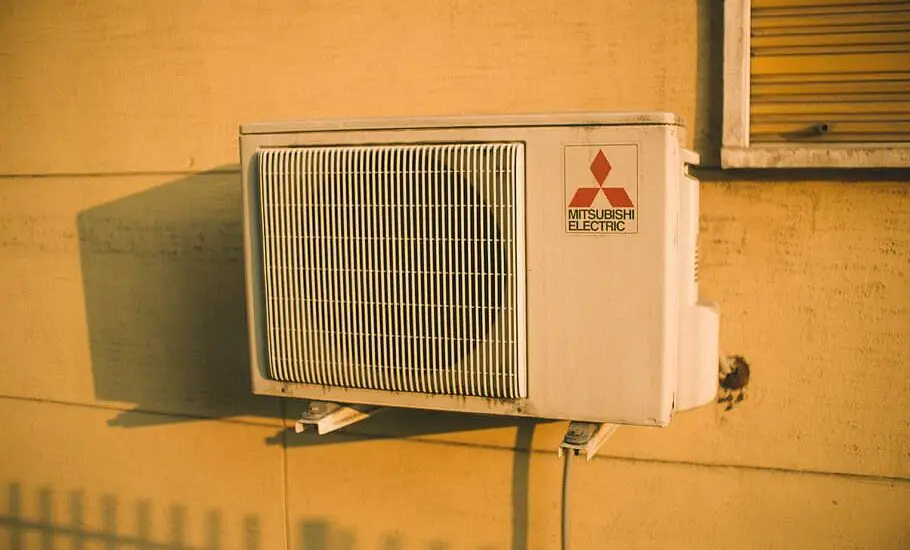Is your outside condenser unit blowing cold air instead of a warm breeze? Well, you’re not alone. It might seem like a minor hiccup, but understanding and rectifying this issue is crucial for the health of your HVAC system.

Table of Contents
Why Your Outside Condenser Unit Might Blow Cold Air
So, what happens when your outside unit starts blowing cold air instead? Well, there could be a few culprits.
Heat Pump Operating in Reverse
First up, your heat pump might be pulling a switcheroo on you. It could be operating in reverse, causing it to blow cold air outside. Now, this might sound unusual, but it’s quite common during the defrost cycle. So, don’t panic just yet.
Faulty Reversing Valve
But what if your heat pump’s playing tricks outside the defrost cycle? Well, you might be dealing with a faulty reversing valve. This little part is the maestro that directs the refrigerant flow. When it fails, the heat pump gets stuck in one mode, leading to your outside unit blowing cold air.
Low Refrigerant Levels
Or, you might be running low on refrigerant. This magical substance is what helps your heat pump transfer heat. So, if it’s running low, you might notice your outside unit blowing cold air. Not quite the chilling experience you want, right?
Diagnosing and Fixing the Problem
Okay, so we’ve identified potential problems. But how do you fix them? Let’s break it down.
Identifying the Issue
Alright, let’s get to the heart of the matter. Before you can fix the issue, you need to be sure what you’re dealing with. Remember, the outside condenser unit blowing cold air could be because of several reasons. So, how do you figure out which one it is?
First off, check if your heat pump is operating in reverse when it’s not in defrost cycle. Your thermostat should tell you this. It’s also worth taking a walk around your unit. Do you see ice forming on it? That’s a sign your unit might be stuck in defrost mode.
Next, check for signs of a faulty reversing valve. Is there a hissing sound coming from the unit? This could be a sign of a stuck valve. Lastly, take a look at your refrigerant levels. If they’re low, you might notice frost forming on the coils.
Solutions to Your Outside Condenser Unit Blowing Cold Air Problem
Once you’ve identified the issue, you’re ready to roll up your sleeves and get to work.
Adjusting Heat Pump Settings
Let’s say you’ve figured out your heat pump is acting up and running in reverse. Sometimes, the solution is as simple as adjusting the settings. Maybe there’s been a power cut or someone accidentally changed the thermostat settings. Hey, it happens!
To adjust the settings, head over to your thermostat. Make sure it’s set to the appropriate mode for the season. If it’s winter, it should be in heating mode, and if it’s summer, in cooling mode. It’s that simple. A quick flip of a switch can have your system running properly again.
Reversing Valve Replacement
So, you’ve discovered a faulty reversing valve is to blame? This is a bit trickier than flipping a switch but don’t worry, we’ve got you covered.
Replacing a reversing valve is a job for a professional. The reversing valve is a complex part of your heat pump that changes the direction of the refrigerant. It requires technical knowledge and specific tools to replace. So, if you suspect your reversing valve is at fault, it’s best to call in a professional HVAC technician. They’ll test the valve and if necessary, replace it with a new one, ensuring your system is back to functioning as it should.
Refrigerant Recharge
Running low on refrigerant? This could be why your outside condenser unit is blowing cold air. The refrigerant is the lifeblood of your HVAC system. When levels are low, the system can’t effectively transfer heat, causing the unit to blow cold air.
Recharging the refrigerant is another job for a professional. It involves checking for leaks, repairing any found, and then adding the correct amount of refrigerant. It’s not a DIY job – refrigerant can be dangerous to handle without proper training and equipment. So, don’t risk it. Call in a pro to take care of it.
When to Call a Professional
Now, it’s crucial to understand when it’s time to call in the pros. These fixes might seem doable, but without the right expertise, they can lead to more harm than good. So, when in doubt, always opt for professional help.
Check out these other related articles…
Function of a Condenser in a Refrigeration System: 101 Guide
Condenser Overheating: Causes & Proven Solutions
Bad Condenser Symptoms: Your Comprehensive 101 Guide
Blocked Condenser Coil Symptoms: Comprehensive 411 Guide
3 Common Condenser Problems: Proven Fixes
Prevention and Maintenance Tips
Prevention is better than cure, right? Here are a few tips to help prevent these issues from cropping up.
Regular maintenance is your best friend. Keep a check on your system, especially before seasonal changes. Set up regular professional HVAC system checks – it’s a small price to pay for a smoothly running system. Remember, timely repair and replacement of faulty components can save you a lot of trouble (and money) down the line.
